IBM Researchers Storing Data on World’s Smallest Magnet: Single Atom
1,000 times denser than HDDs and solid state memory chips
This is a Press Release edited by StorageNewsletter.com on March 13, 2017 at 2:32 pmIBM Corporation created the world’s smallest magnet using a single atom – and stored one bit of data on it.
A view from IBM Research’s Nobel prize-winning microscope
of a single atom of Holmium, an rare earth element used as a magnet
to store one bit of data. Scientists used its scanning tunneling microscope
to demonstrate technology that could someday store all 35 million songs
on iTunes library on the area of a credit card.
(Photo: Stan Olswekski for IBM)
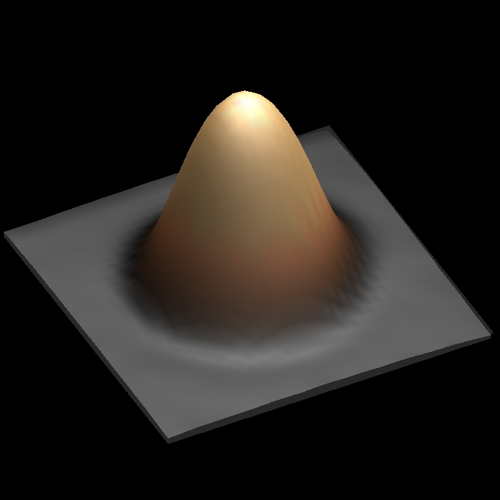
Currently, HDD drives use about 100,000 atoms to store a single bit. The ability to read and write one bit on one atom creates new possibilities for developing smaller and denser storage devices, that could someday, for example, enable storing the entire iTunes library of 35 million songs on a device the size of a credit card.
This breakthrough builds on 35 years of nanotechnology history at IBM, including the invention of the Nobel prize-winning scanning tunneling microscope. Earlier last week, the company announced it will be building the world’s first commercial quantum computers for business and science. Future scanning tunneling microscope studies will investigate the potential of performing quantum information processing using individual magnetic atoms.
Christopher Lutz of IBM Research – Almaden in San Jose, CA
stands with IBM’s Nobel-prize winning microscope used to store data
on a single atom magnet. IBM scientists used its scanning tunneling microscope
to demonstrate technology that could someday store all 35 million songs
on iTunes library on the area of a credit card.
(Photo: Stan Olszewski for IBM)
“Magnetic bits lie at the heart of hard-disk drives, tape and next-generation magnetic memory,” said Christopher Lutz, lead, nanoscience, researcher, IBM Research, Almaden, San Jose, CA. “We conducted this research to understand what happens when you shrink technology down to the most fundamental extreme — the atomic scale.“
IBM scientists Chris Lutz, Bruce Melior, Kai Yang and Philip Willke (L to R)
used an IBM-invented, Nobel prize-winning microscope to create the
world’s smallest magnet from an atom to store one bit of data.
(Photo: Stan Olszewski for IBM)
By starting at the smallest unit of common matter, the atom, scientists demonstrated the reading and writing of a bit of information to the atom by using electrical current. They showed that two magnetic atoms could be written and read independently even when they were separated by just one nm – a distance that is only a millionth the width of a pin head. This tight spacing could eventually yield magnetic storage that is 1,000 times denser than today’s HDDs and solid state memory chips. Future applications of nanostructures built with control over the position of every atom could allow people and businesses to store 1,000 times more information in the same space, someday making data centers, computers and personal devices smaller and more powerful.
IBM scientists Philip Willke, Chris Lutz and Kai Yang of IBM Research – Almaden ,
created the world’s smallest magnet from an atom to store one bit of data.
(Photo: Stan Olswekski for IBM)
The study was published in the peer-reviewed journal, Nature.
Microscope mechanic, Bruce Melior, photographed at IBM Research Almaden campus
in San Jose, California. IBM scientists invented the Nobel-prize winning
scanning tunneling microscope (STM) in 1986.
(Photo: Stan Olszewski for IBM)
Scientists used scanning tunneling microscope (STM), an IBM invention that won the 1986 Nobel Prize for Physics, to build and measure isolated single-atom bits using the holmium atoms. The custom microscope operates in extreme vacuum conditions to eliminate interference by air molecules and other contamination. The microscope also uses liquid helium for cooling that allows the atoms to retain their magnetic orientations long enough to be written and read reliably.
About IBM Research
For more than seven decades, IBM Research has defined the future of information technology with more than 3,000 researchers in twelve labs located across six continents. Scientists from IBM Research have produced six Nobel Laureates, 10 U.S. National Medals of Technology, five U.S. National Medals of Science, six Turing Awards, 19 inductees in the National Academy of Sciences and 20 inductees into the U.S. National Inventors Hall of Fame.
Article: Reading and writing single-atom magnets
Nature has published an article written by Fabian D. Natterer, IBM Almaden Research Center, San Jose, California 95120, USA, Institute of Physics, École Polytechnique Fédérale de Lausanne, CH-1015 Lausanne, Switzerland, Kai Yang, IBM Almaden Research Center, San Jose, California 95120, USA, School of Physical Sciences and Key Laboratory of Vacuum Physics, University of Chinese Academy of Sciences, Beijing 100049, China, William Paul, IBM Almaden Research Center, San Jose, California 95120, USA , Philip Willke, IBM Almaden Research Center, San Jose, California 95120, USA, IV. Physical Institute, University of Göttingen, Friedrich-Hund-Platz 1, D-37077 Göttingen, Germany, Taeyoung Choi, IBM Almaden Research Center, San Jose, California 95120, USA , Thomas Greber, IBM Almaden Research Center, San Jose, California 95120, USA, Physik-Institut, Universität Zürich, Winterthurerstrasse 190, CH-8057 Zürich, Switzerland, Andreas J. Heinrich, Institute of Basic Science, Center for Quantum Nanoscience, Seoul, South Korea, Physics Department, Ewha Womans University, Seoul, South Korea, and Christopher P. Lutz, IBM Almaden Research Center, San Jose, California 95120, USA
Figure 1: Experimental set-up and magnetic switching of holmium.
a, Topographic image of a Ho and an Fe atom on bilayer MgO.
The magnetic states of Ho are controlled and probed with an STM
using spin-polarized tunnelling (V = 10 mV, I = 10 pA, 2.35 nm × 2.35 nm, T = 1.2 K, Bz ≈ 100 mT). b……..
Abstract : “The single-atom bit represents the ultimate limit of the classical approach to high-density magnetic storage media. So far, the smallest individually addressable bistable magnetic bits have consisted of 3–12 atoms1, 2, 3. Long magnetic relaxation times have been demonstrated for single lanthanide atoms in molecular magnets4, 5, 6, 7, 8, 9, 10, 11, 12, for lanthanides diluted in bulk crystals13, and recently for ensembles of holmium (Ho) atoms supported on magnesium oxide (MgO)14. These experiments suggest a path towards data storage at the atomic limit, but the way in which individual magnetic centres are accessed remains unclear. Here we demonstrate the reading and writing of the magnetism of individual Ho atoms on MgO, and show that they independently retain their magnetic information over many hours. We read the Ho states using tunnel magnetoresistance15, 16 and write the states with current pulses using a scanning tunnelling microscope. The magnetic origin of the long-lived states is confirmed by single-atom electron spin resonance17 on a nearby iron sensor atom, which also shows that Ho has a large out-of-plane moment of 10.1 ± 0.1 Bohr magnetons on this surface. To demonstrate independent reading and writing, we built an atomic-scale structure with two Ho bits, to which we write the four possible states and which we read out both magnetoresistively and remotely by electron spin resonance. The high magnetic stability combined with electrical reading and writing shows that single-atom magnetic memory is indeed possible.”








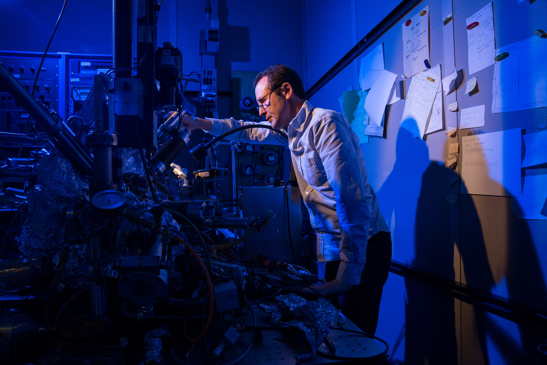
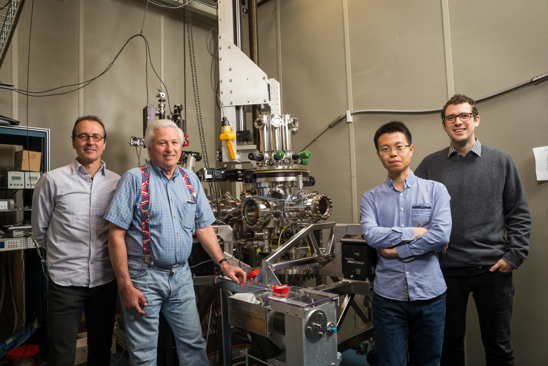
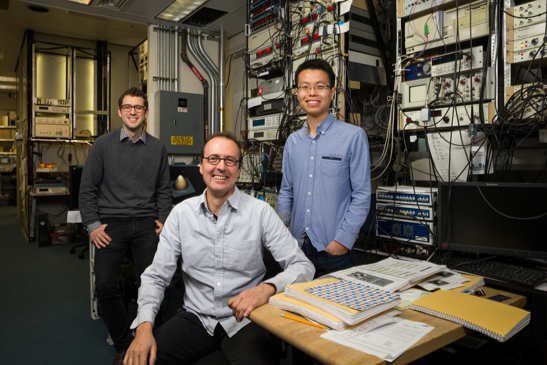
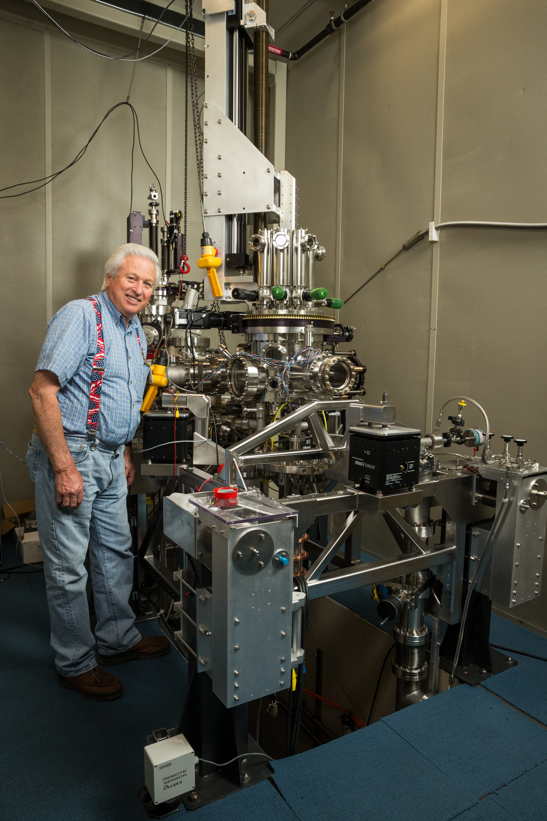
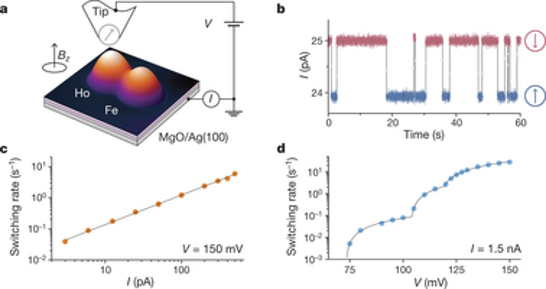




 Subscribe to our free daily newsletter
Subscribe to our free daily newsletter
